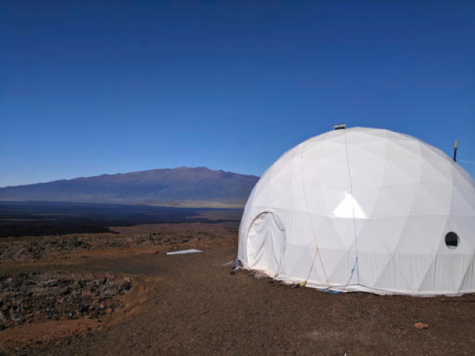How Close are We to Landing on Mars?
February 27, 2017
In 1942 the world launched its first object into space. In 1969 the first humans walked on the moon. How long until we set foot on Mars?
A human has never stood on the Red Planet. In 1972 we accomplished the first soft landing by the unmanned probe “Mars 3”, launched by the Soviet Union. Scientists are now not only investigating how to land someone on Mars, but how to establish a life supporting environment there.
Elon Musk, CEO of the aerospace company SpaceX, is a prominent leader of the movement. In late September, Musk released the details of his plan to establish a sustainable society on Mars within the next 50 to 100 years.

Musk’s idea unveils the Interplanetary Transport System, according to Space.com, which would be capable of transporting at least 100 people to the surface of Mars. The rocket would be reusable, meaning the tickets for a 33.9 million mile trip would not be one way. Musk says the spacecraft, being as long as a 40-story building is tall, will contain restaurants, movie theaters, and other amenities.
“It will be like, really fun to go. You’ll have a great time,” Musk said when proposing the plan.
But before the world can establish a society on our neighboring planet, the mystery of survival on Mars must be solved. According to Space.com, the average temperature on Mars is -60℃ (-80℉), and the atmosphere is nearly 100 times thinner than that of Earth’s. The paper thin atmosphere means heavy radiation from the sun reaches the planet’s surface, making life as we know it impossible on the planet. Not to mention less than one percent of the atmosphere is oxygen. At least in the first human societies on Mars, citizens will have to live in small structures for long periods of time to avoid the harmful effects of radiation.
NASA is trying to plan for these circumstances in a series of experiments named the HI-SEAS missions. According to Sci-Tech Today, a group of six crew members began the mission recently, which consists of living in a dome on a Hawaiian volcano for eight months. The crew will have zero contact with the outside world other than communicating over radio with NASA, and will have to wear spacesuits whenever they exit the 1,200 square foot dome. The idea is to simulate the conditions men and women will have to endure while living on Mars. NASA hopes to use this experiment to land humans on an asteroid sometime in the 2020’s, and eventually land someone on Mars in the 2030’s.
Unfortunately, for both NASA and SpaceX, budgets are limited. NASA has a budget of approximately $18 billion, making up just 0.5% of the US’s total federal budget. SpaceX uses just $1 billion every year. These numbers make the plan to colonize Mars in the next 20 years seem unrealistic.
One man seems to have found a way around the issue of funding. Behrokh Khoshnevis, an engineering professor at the University of Southern California working with NASA, has come up with a plan to build a more cost effective colony on Mars in the next 50 years. According to CNN, Khoshnevis wants NASA to build colonies on Mars using 3-D printing and resources already on the planet.
“When I read about the moon and Mars — the conditions, the habitats — I realized that almost all of the existing ideas involved taking materials and components from Earth and building with those materials. Taking 1 kilogram of material from Earth to the moon would cost hundreds of thousands dollars. It was clear to me that these ideas were not economically viable,” Khoshnevis said in an interview with CNN.
The project would involve robotic construction of structures on Mars due to the harsh climate for humans. Robots controlled from Earth would first build an energy source, such as solar panels. Once there’s a source of energy, construction would begin on housing units, as well as a landing pad and hangar for the eventual arrival of humans.
While many roadblocks stand in the way of the space industry, the idea of humans on Mars is becoming clearer. Through ideas by Musk, NASA, and others, we continue to move closer to the goal.






